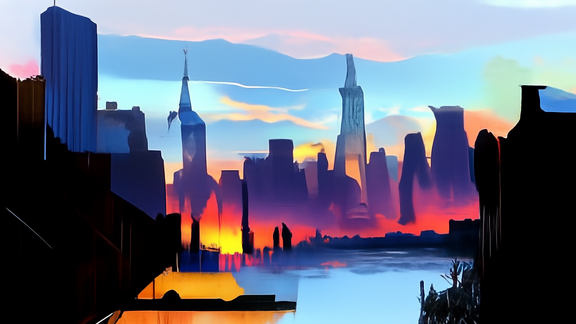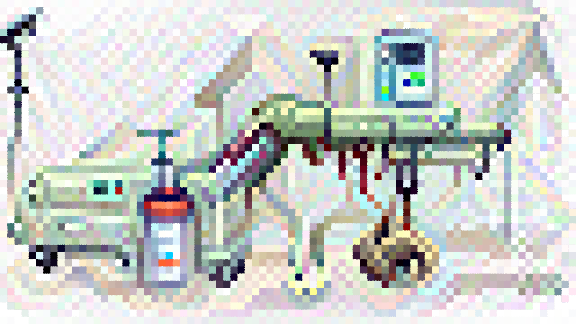Pixray
Models by this creator

text2image

1.4K
text2image by pixray is an AI-powered image generation system that can create unique visual outputs from text prompts. It combines various approaches, including perception engines, CLIP-guided GAN imagery, and techniques for navigating latent space. The model is capable of generating diverse and imaginative images that capture the essence of the provided text prompt. Compared to similar models like pixray-text2image, pixray-text2pixel, dreamshaper, prompt-parrot, and majicmix, text2image by pixray offers a unique combination of capabilities that allow for the generation of highly detailed and visually captivating images from textual descriptions. Model Inputs and Outputs The text2image model takes a text prompt as input and generates an image as output. The text prompt can be a description, scene, or concept that the user wants the model to visualize. The output is an image that represents the given prompt. Inputs Prompts**: A text description or concept that the model should use to generate an image. Settings**: Optional additional settings in a name: value format to customize the model's behavior. Drawer**: The rendering engine to use, with the default being "vqgan". Outputs Output Images**: The generated image(s) based on the provided text prompt. Capabilities The text2image model by pixray is capable of generating a wide range of images, from realistic scenes to abstract and surreal compositions. The model can capture various themes, styles, and visual details based on the input prompt, showcasing its versatility and imagination. What Can I Use It For? The text2image model can be useful for a variety of applications, such as: Concept art and visualization: Generate images to illustrate ideas, stories, or designs. Creative exploration: Experiment with different text prompts to discover unique and unexpected visual outputs. Educational and research purposes: Use the model to explore the relationship between language and visual representation. Prototyping and ideation: Quickly generate visual sketches to explore design concepts or product ideas. Things to Try With text2image, you can experiment with different types of text prompts to see how the model responds. Try describing specific scenes, objects, or emotions, and observe how the generated images capture the essence of your prompts. Additionally, you can explore the model's settings and different rendering engines to customize the visual style of the output.
Updated 9/16/2024

text2image-future

24
text2image-future is an image generation AI model created by pixray. It combines previous ideas from Perception Engines, CLIP guided GAN imagery, and CLIPDraw. The model can take a text prompt and generate a corresponding image, similar to other pixray models like text2image, pixray-text2image, and pixray-text2pixel. Model inputs and outputs text2image-future takes a text prompt as input and generates one or more corresponding images as output. The model can be run from the command line, within Python code, or using a Colab notebook. Inputs Prompts**: A text prompt describing the desired image Outputs Images**: One or more images generated based on the input prompt Capabilities text2image-future can generate a wide variety of images from text prompts, spanning genres like landscapes, portraits, abstract art, and more. The model leverages techniques like image augmentation, latent space optimization, and CLIP-guided generation to produce high-quality, visually compelling outputs. What can I use it for? You can use text2image-future to generate images for a variety of creative and practical applications, such as: Concept art and visualization for digital art, games, or films Rapid prototyping and ideation for product design Illustration and visual storytelling Social media content and marketing assets Things to try Some interesting things to explore with text2image-future include: Experimenting with different types of prompts, from specific descriptions to more abstract, evocative language Trying out the various rendering engines and settings to see how they affect the output Combining the model with other tools and techniques, such as image editing or 3D modeling Exploring the limits of the model's capabilities and trying to push it to generate unexpected or surreal imagery
Updated 9/16/2024

api

11
api is a bare-bones version of the Pixray image generation system. Pixray combines various previous ideas such as Perception Engines, CLIP guided GAN imagery, and Sampling Generative Networks. Pixray is a Python library and command line utility, also usable in Google Colab notebooks. It offers more customization options than the similar pixray-api model, but less than the full-featured pixray model. Model inputs and outputs The api model takes a YAML string as input, which contains settings for the image generation process. The output is an array of image URLs, representing the generated images. Inputs settings**: A YAML string containing configuration options for the image generation. Outputs Output**: An array of image URLs, each representing a generated image. Capabilities The api model can generate diverse and visually striking images from text prompts. It can create surreal, abstract, and photorealistic images across a wide range of subjects and styles. What can I use it for? The api model can be used for creative projects, art generation, and prototyping ideas. It could be integrated into applications or web services that require on-demand image generation from text descriptions. The model's ability to produce unique and unexpected images makes it a useful tool for creative exploration and ideation. Things to try Try experimenting with different YAML settings to see how they affect the generated images. Explore prompts that combine multiple concepts or styles to create more complex and surprising outputs. You can also try using the api model as a starting point for further image manipulation or processing.
Updated 9/16/2024